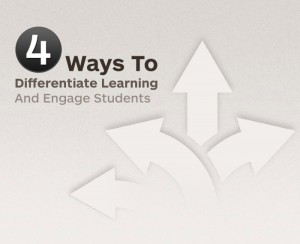Most educators have suffered from technophobia at one stage or another. The fear of technology is embedded in its ever-changing nature, meaning we never really know it. Fear of the unknown could possibly equate for every fear ‘known’ to man. I for one, felt this fear as a young teacher starting out. It has to be said that I quietly cursed all those tech-savvy teachers who were always ten steps ahead, creating blog posts such as this one that made me feel all the more inadequate in my blissful ignorance.
What did give me some comfort however was that many innovative attempts by such super-teachers to engage technology failed miserably, dragging them back to my level of technophobia. The only difference… they bounced back. I eventually realized my fear, like all fears, could only be overcome through effort, so I gave it a try. Technology can offer so much to an educator that (despite what you might think) it actually makes your life easier, and your profession more enjoyable.
So I have devised these simple steps to urge teachers to take a leap into the unknown… you might be pleasantly surprised.
Step #1 Make a list.
Jot down all your fears surrounding technology and why you’re hesitant to use it. Once these are down on paper, they won’t seem half as daunting as you may have imagined.
Step #2 Ask for help.
Although a difficult task for an educator to drop the veil of the all-powerful knowledge-giver, everyone needs help now and again. Ask friends or colleagues for simple advice on where to begin (Tip: ask students for help, they will love the brief role-reversal).
Step #3 Play!
You may be sick of hearing that learning should be a fun and enjoyable process (as we all know it can’t always be) but when you’re given the freedom to explore something new using your own initiative, it will be. So just play around with it and see where it gets you. (Tip: check out technology integration blogs for useful tips and tools on where to begin).
Step #4 Observe.
As an experiment, load your students with the technological tools to be creative, take a back seat, and observe. An obvious issue here is the safety so maybe even start with Fishtree and see where the students take it.
Step #5 Learn with students.
Sometimes an understated ability for teachers to learn with their students, but one we all quietly engage in, so indulge. This is an excellent opportunity to change the dynamic of your class and promote a mutual understanding between you and your students.
Step #6 Start small.
Make your first tekkie lesson small, trying to do too much at once is a recipe for disaster. Try bringing Youtube clips into the classroom, using flashcards or have the students use their phones to record themselves reading or practicing oral work.
Step #7 Interact.
Start getting familiar with social media sites like Twitter and Facebook. Then when you’re ready, create a class Twitter page, or use Fishtree’s social stream to interact with your students outside of class hours to discuss and share ideas and submit assignments.
Step #8 Exchange ideas.
Brainstorm ideas with your colleagues and ask them for any ideas for lessons using technology. Find out what they have used that has worked, and what hasn’t worked. This is a great way to collaborate with your colleagues on technology integration and arguably the best possible resource when creating effective lessons.
Step #9 Have a back-up.
A back-up plan is always a good idea just in case anything goes wrong. But if you’re lesson is centered around technology, keep it that way. For example, if you’re using Twitter in the classroom but something goes wrong, have Twitter page templates at the ready, this will keep them centered on the topic and they still get the buzz of tweeting.
Step #10 Self-assess.
As teachers, we are always being told to engage in self-assessment which can sometimes seem very trivial, but when trying something new, it’s effective. After each lesson, take note of what worked well and what didn’t work so that you know where to begin the next time.
What one thing are you going to try this week to conquer your technophobia?
About the author:
Lorna Keane is a teacher of French, English and ESL. She specializes in language teaching and has taught in second and third-level institutions in several countries. She holds a B.A in languages and cultural studies and an M.A in French literature, theory and visual culture. Subscribe to her blog or follow her on Twitter.
//
P.S. Whether working with students in the classroom, or students in flipped and blended learning environments, at home, in schools, or on mobile devices, Fishtree provides the tools 21st century teachers and students need to improve outcomes. Whatever your role in education, Fishtree is ready to support your success!
